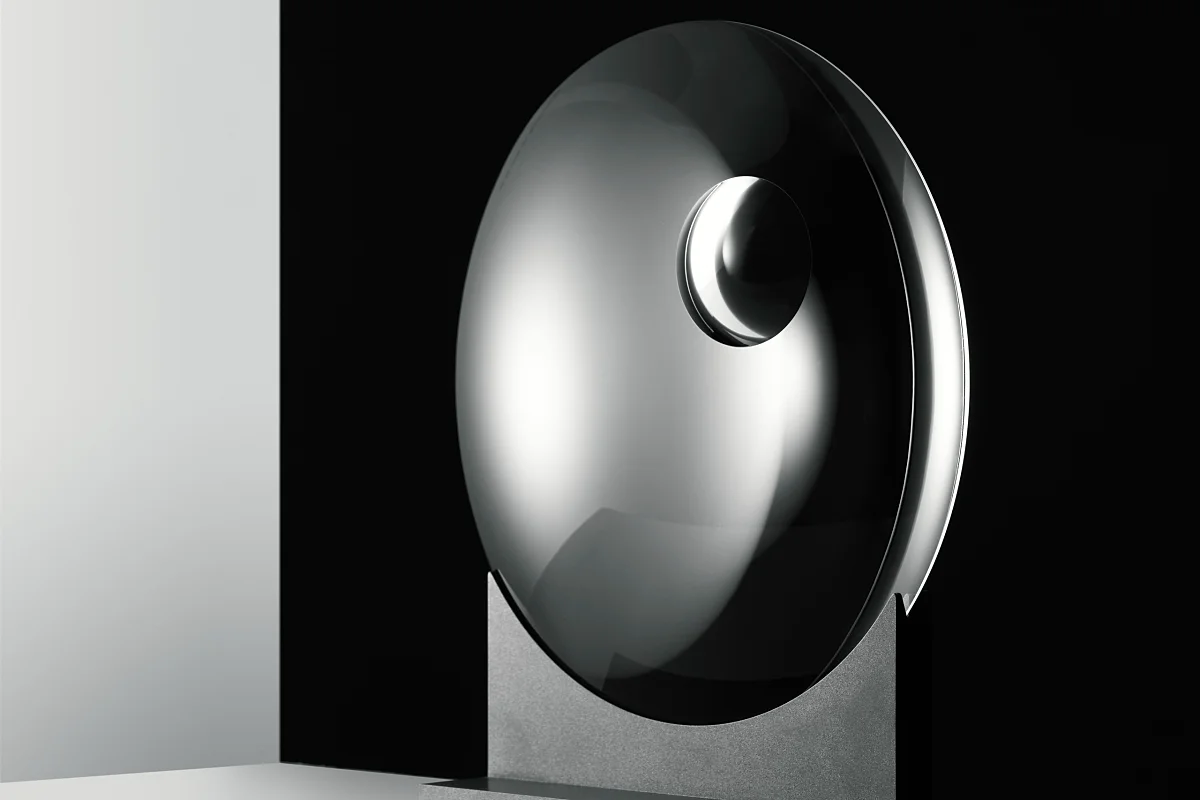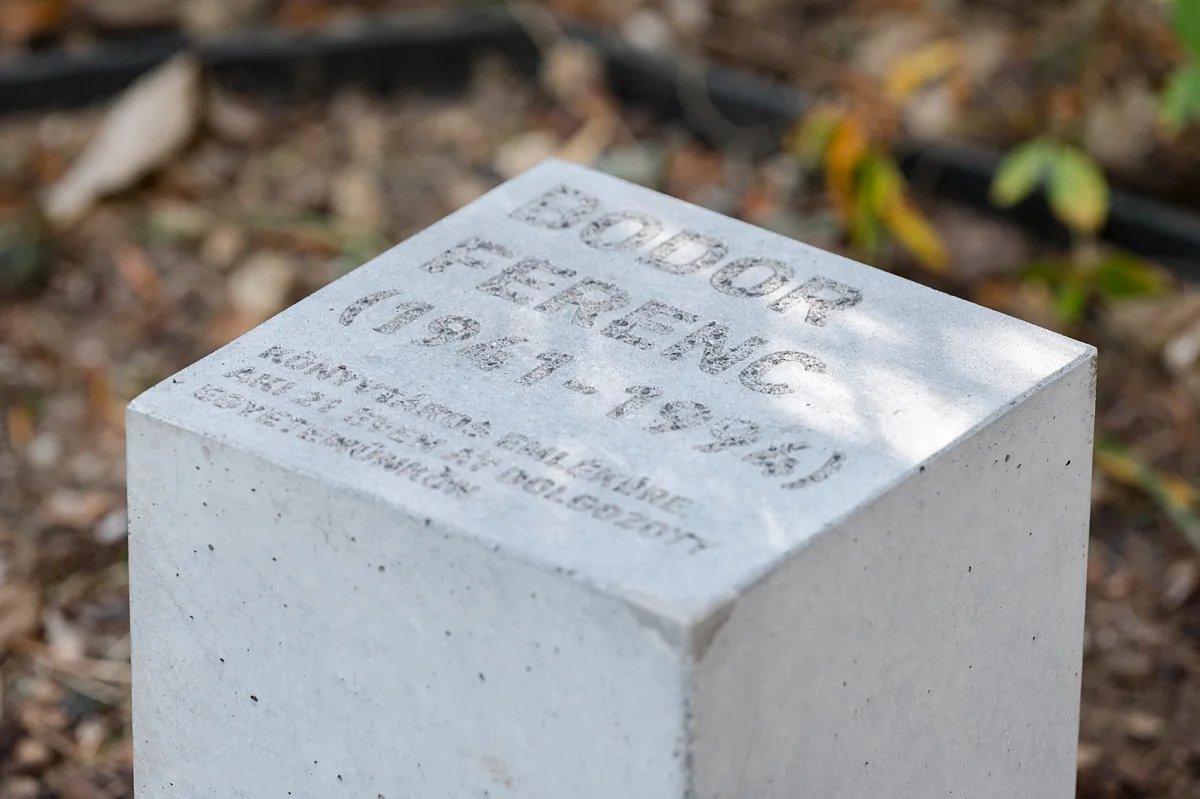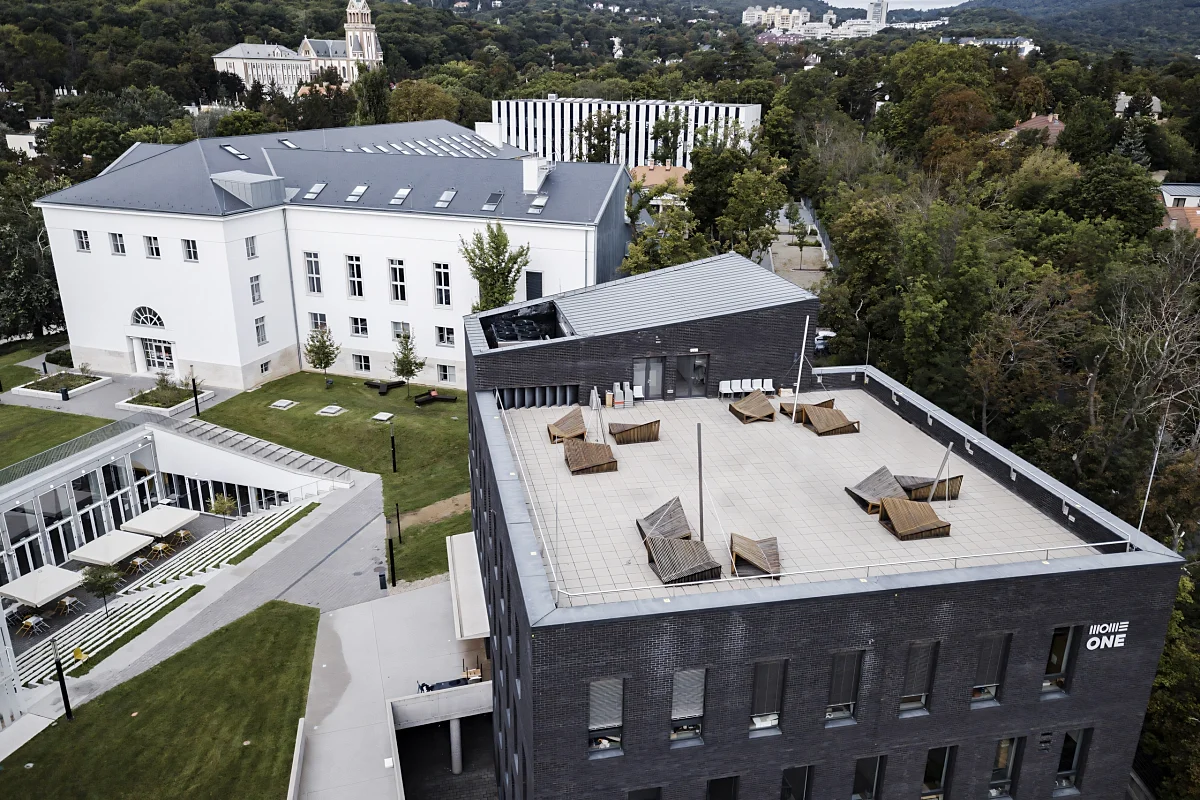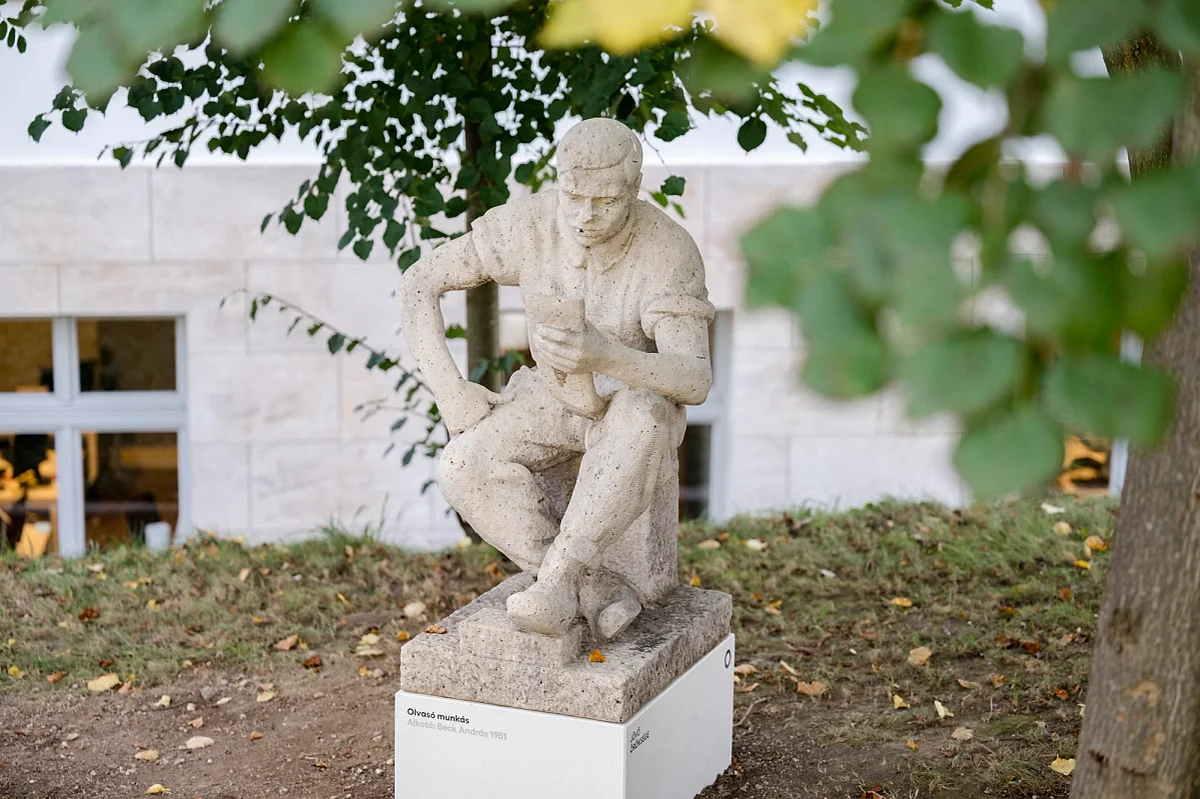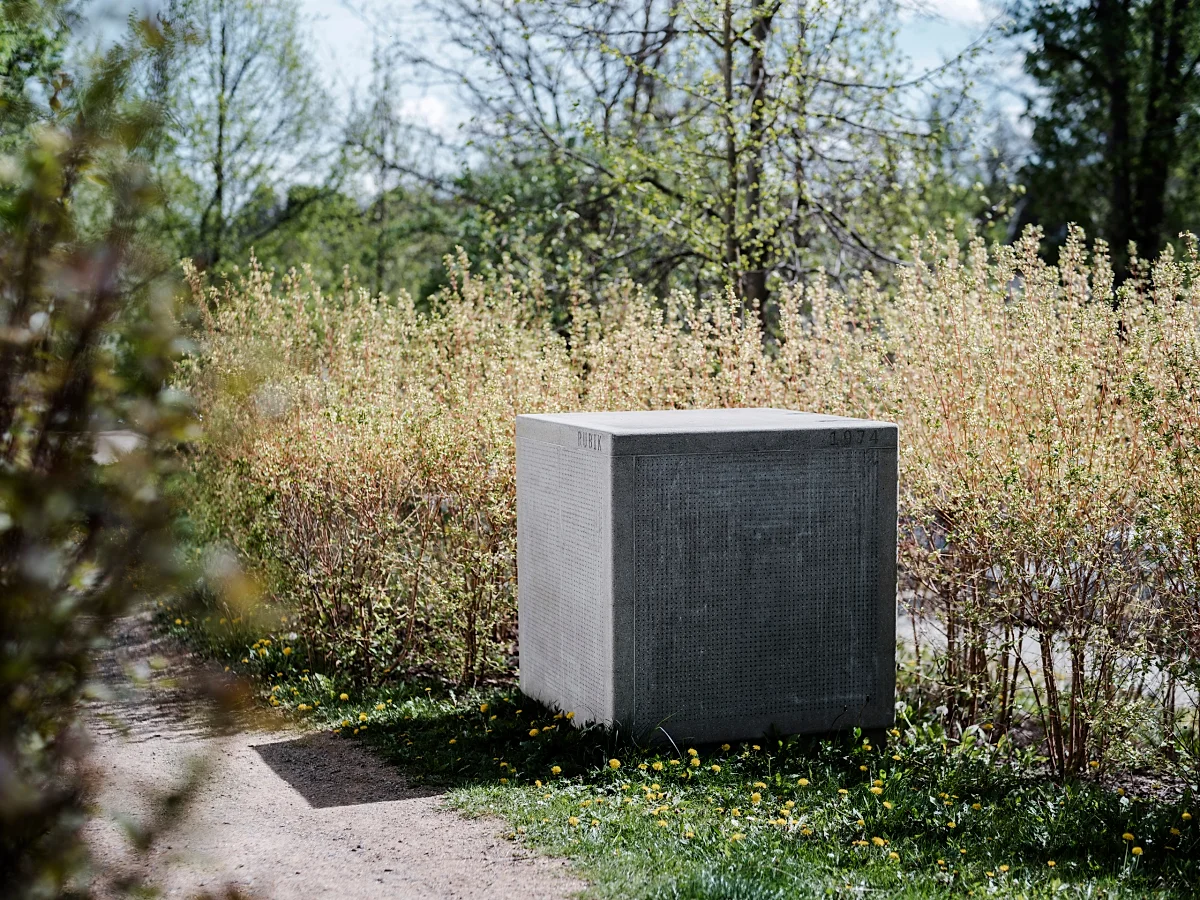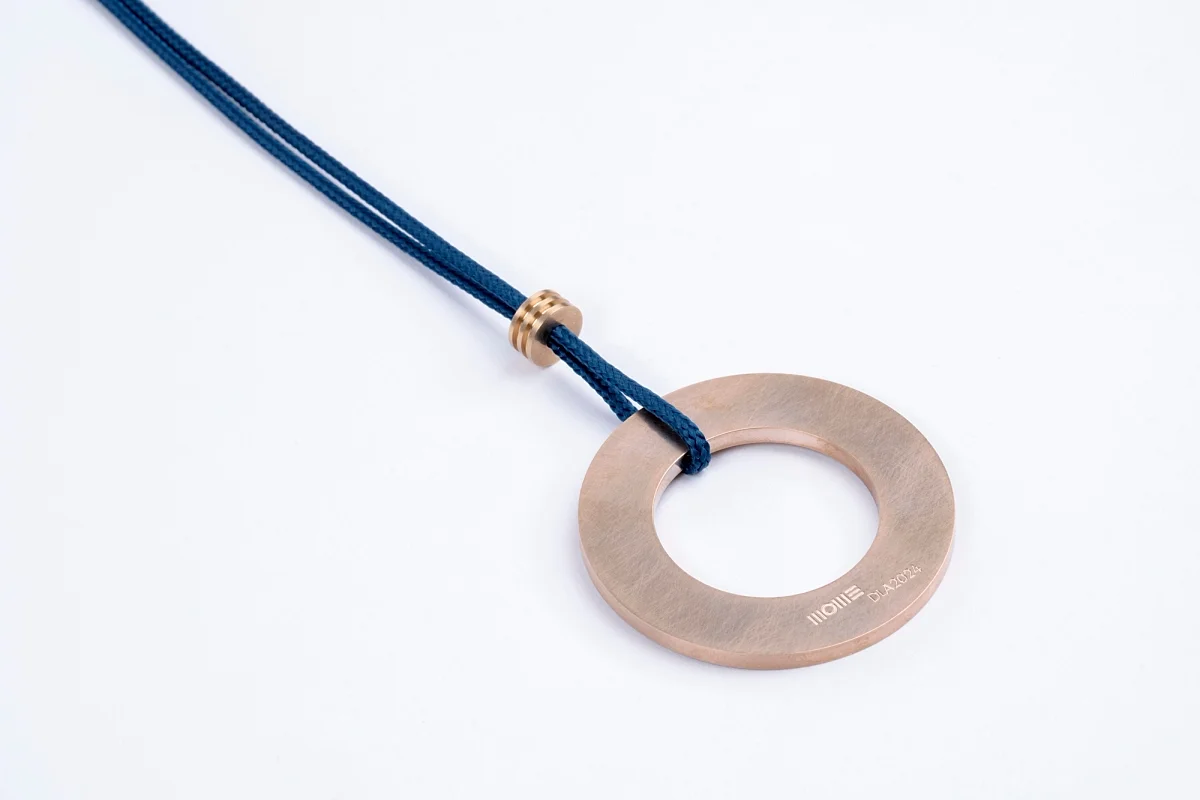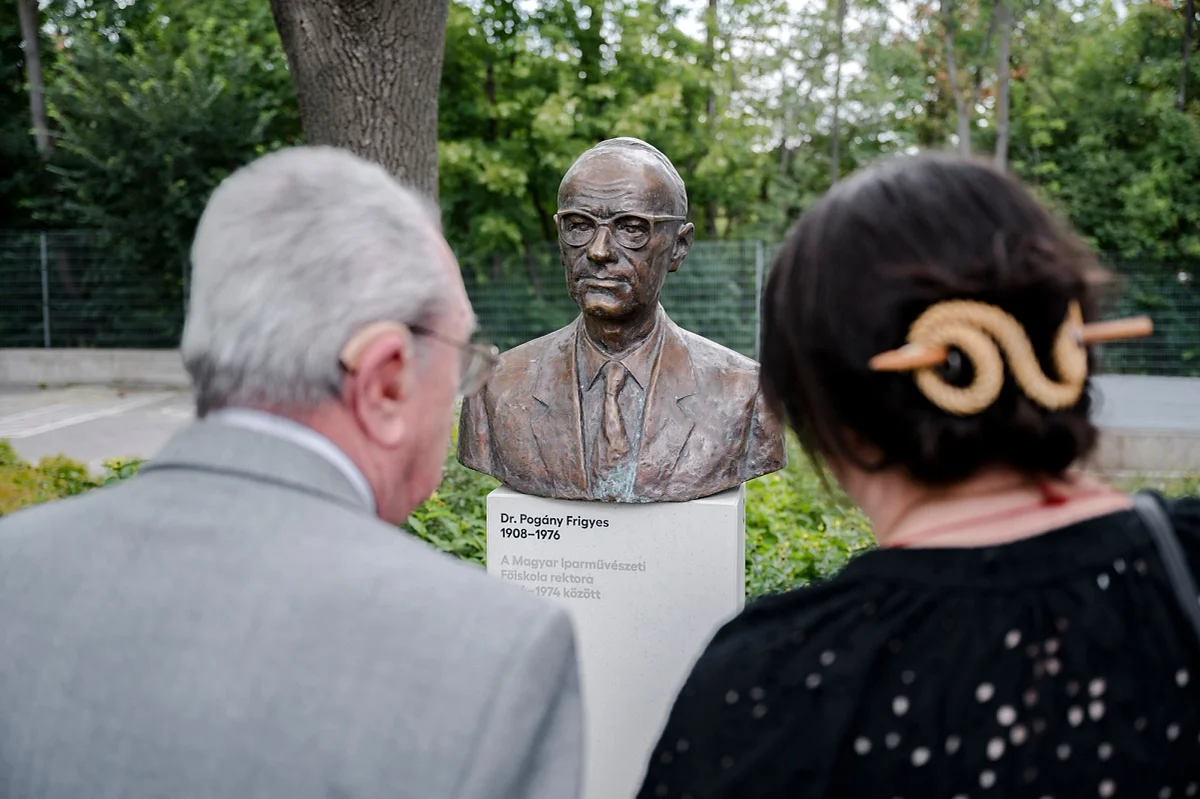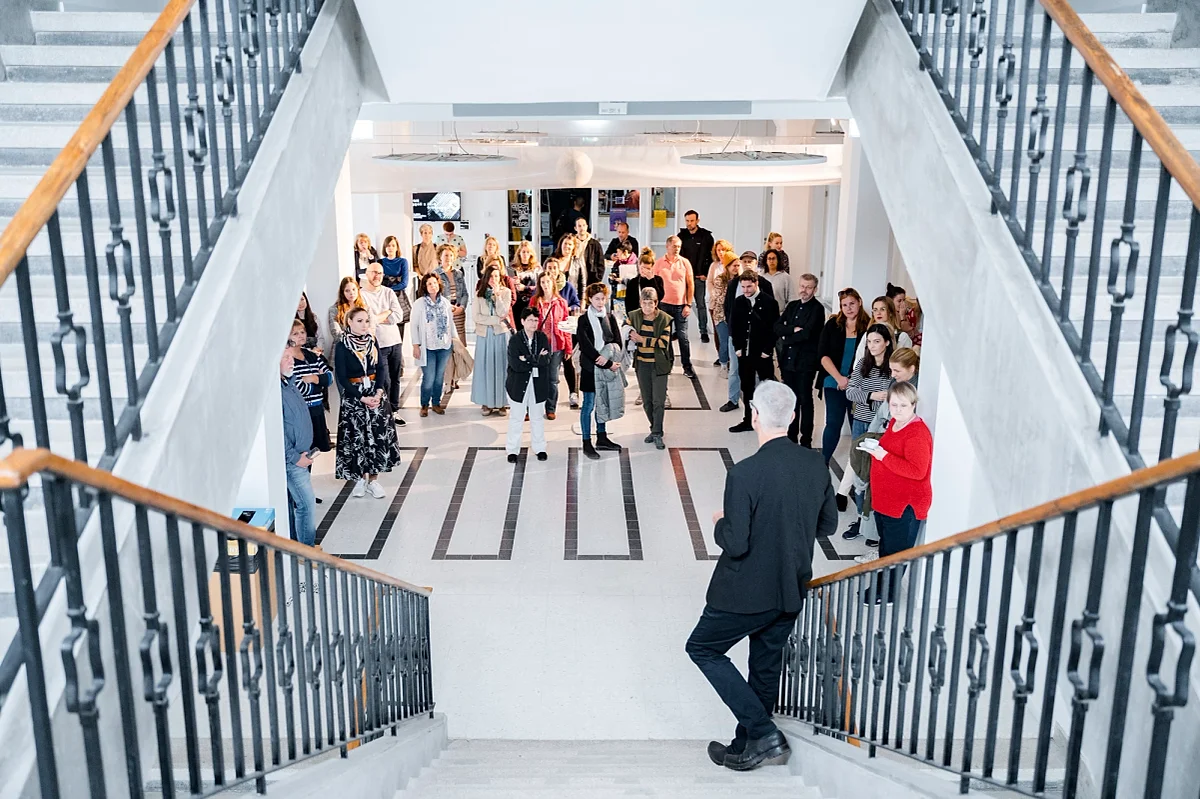Heritage of the Future
Whose footsteps are we following in when entering Moholy-Nagy University of Art and Design? Who has been shaping it over the decades and what values are we carrying on? The MOME Heritage of the Future programme aims to support works, developments, applications, and events that reflect the spirit, character, identity, and values of MOME.
Launched at the initiative of Rector József Fülöp, the tripartite programme creates a framework for a dialogue about the past, providing an opportunity to connect with the University's traditions through meaningful works of art and the legacy of illustrious figures. Understanding our shared history and heritage plays a key role in building our community.
MOME Timeline
The Circles of our Community
At MOME, community is defined as one of our core values. In the midst of constant change and the repetitive rhythm of educational processes, we act as a point of reference presenting the values of the community and their tangible symbols: the University’s emblems, awards, and accolades.

Silver Cylinder
Designed by a student in 2009, the Silver Cylinder is a symbol of belonging to MOME, and it is also the University’s community jewellery. The first Silver Cylinders were presented by Rector at the time Gábor Kopek on the 130th anniversary of the University’s foundation, at the opening ceremony of the 2010/2011 academic year. Since then, both employees and students are awarded Silver Cylinders at the opening ceremony of the year accompanied by a handshake from the rector.
Designer: Kristóf Gelley
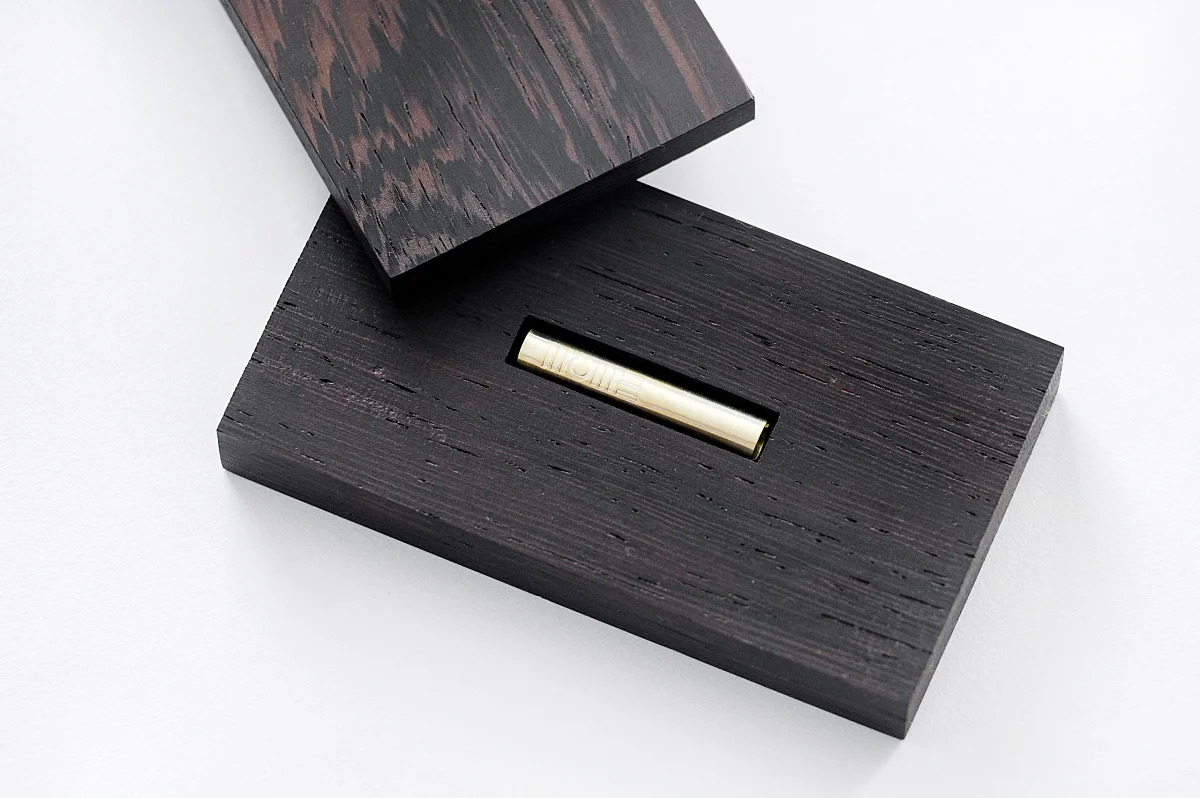
Golden Cylinder
The Rector presents this badge to the recipients of several of the University’s awards and titles, including honorary citizens of the University, recipients of the Rector’s Award and the Aurum Futuri Prize, as well as former teachers who after their tenure, have continued to play an important role in the life of the University. The Golden Cylinder has signified excellence and a special position in the life of MOME for the entire community, since 2011.
Designer: Kristóf Gelley
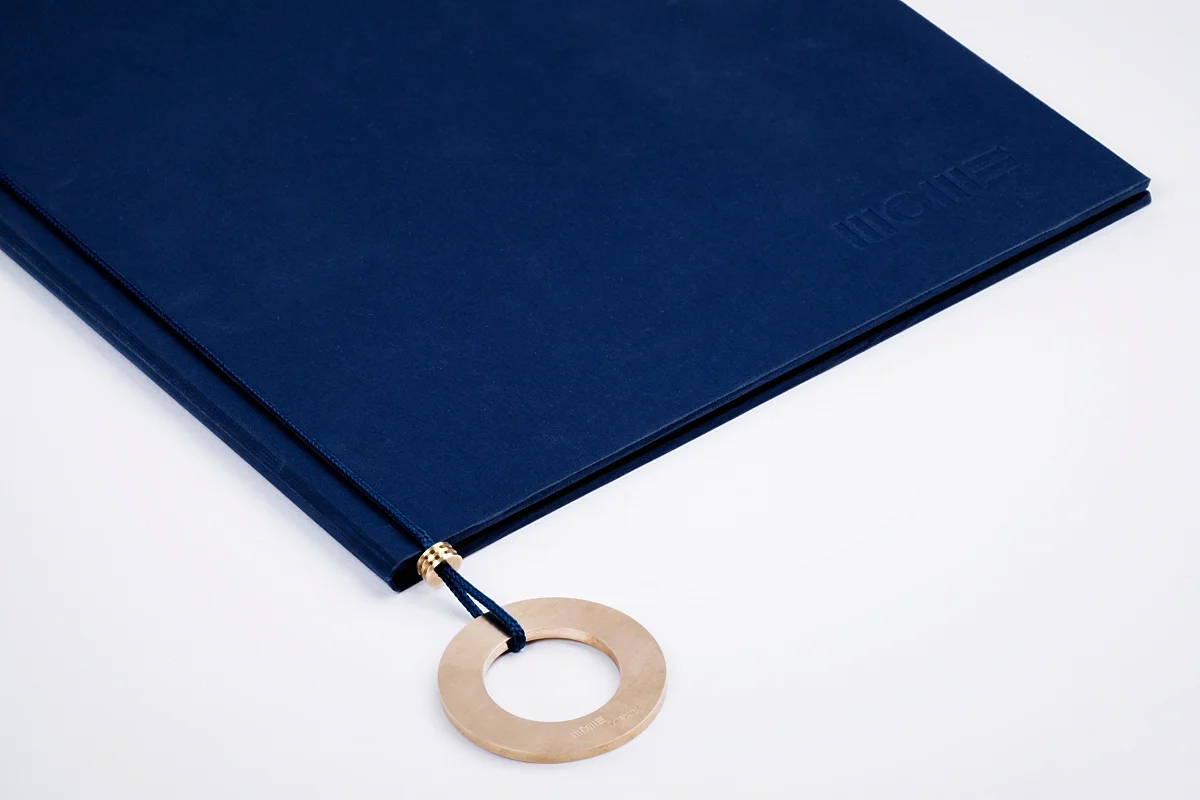
The Heritage of the Future emblem
On the initiative of Rector József Fülöp, graduates at all training levels receive a bronze object inspired by the letter 'O' of the MOME logo, along with their diplomas from 2024 onwards. The emblem symbolises unity, belonging to the community, and becoming a member of the MOME alumni. As a wearable piece of jewellery, it can come into interplay with the human body and clothing in many ways, and serves as a visible insignia.
Designer: Krisztián Ádám
By bearing the world-famous artist’s name, the university expresses its identification with Moholy-Nagy’s educational and artistic principles, as well as its aim to preserve his legacy both nationally and internationally. Established as a part of this commitment, the Moholy-Nagy Award is not only a token of our esteem, but also a reinforcement of the bond between the MOME community and the recipient. It is intended to recognise the oeuvre of persons whose humanistic and creative essence is closely linked to the University or the values it stands for.
In 2021, on the 15th anniversary of our taking Moholy-Nagy’s name, the award trophy was redesigned by Ferenczy Noémi Award-winning metalworker and faculty member of the MOME Design Institute Krisztián Ádám. In harmony with the growth of the University and its coming into its own, the award seeks to become both a tangible manifestation of Moholy-Nagy’s philosophy and a reflection of the constant change that is our shared experience.
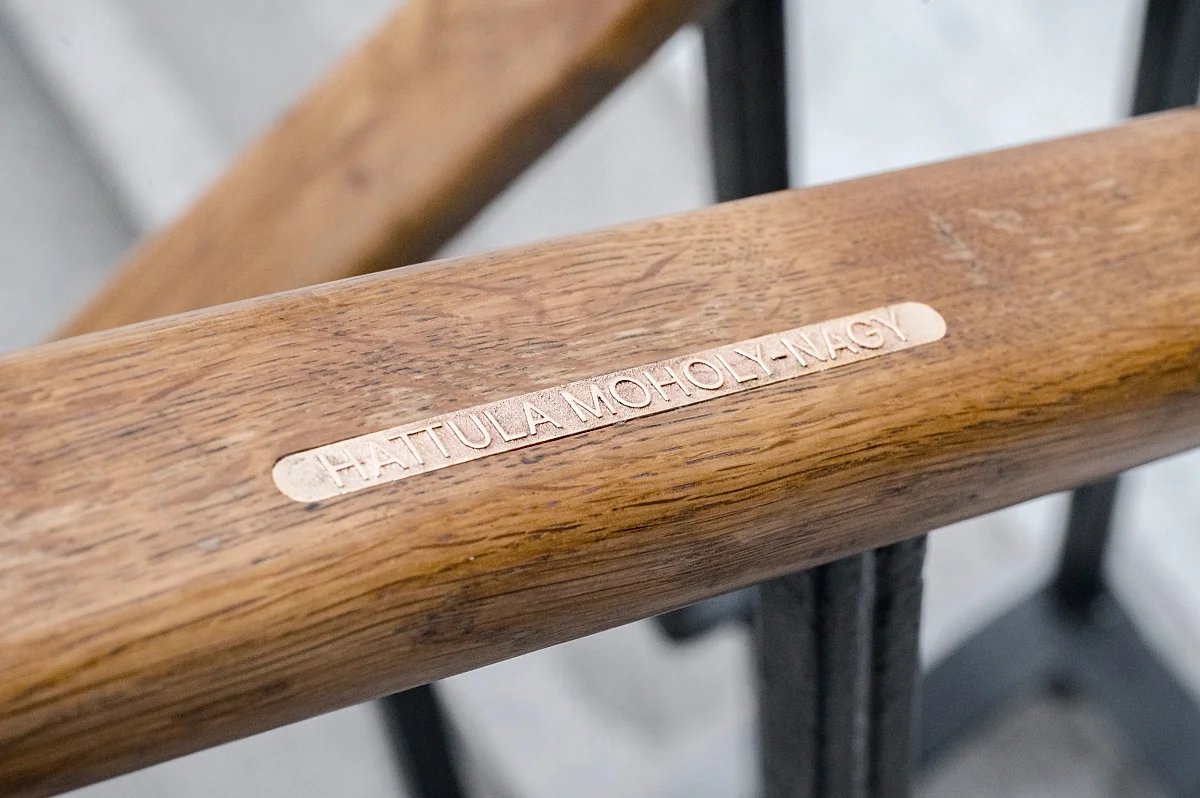
Moholy-Nagy Stairs
One of the University's busiest passages, the main staircase of the MASTER building, has become home to a memorial dedicated to Moholy-Nagy Award recipients. The metal inlays on the handrails are discreet, unobtrusive signs to be sought out and deciphered. The only element to help orientation is an additional cast inserted in the railing on the landing, which reads ‘Moholy-Nagy Award Recipients’.
Designers: Metal designer András Szilos and graphic designer Tamás Kósa
The Spaces of Remembering
MOME has undergone major changes over the past two decades. With the development of the MOME Campus – Creative Innovation and Knowledge Park, it has become an open university engaged in constant interaction with its physical and intellectual environment, student and staff numbers have increased significantly, and the green spaces of the Campus have been transformed into a public park open to all.
Amidst these changes, the presence of works that strengthen our identity and presenting the values of our past has become very important. The Spaces of Our Memory programme focuses on placing archived and declared valuable artworks into a contemporary context during campus development, showcasing impressive works by artists associated with MOME.
You can find out more about the Heritage of the Future programme from the publication below.

